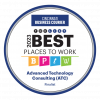Insights
News and Insights

Understanding Vishing Attacks and How to Stay Safe
January 29, 2025


Cybersecurity for Business Leaders: 8 Questions to Ask
November 27, 2024




OHIO
7570 Bales Street
Suite 430
Liberty Township, OH
45069
513-299-1177
CONNECTICUT
36 Judge Lane
South Windsor, CT
06074
860-432-3211
FLORIDA
3131 Santorini Court
Naples, FL
34119
860-432-3211